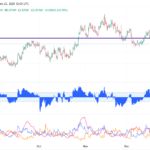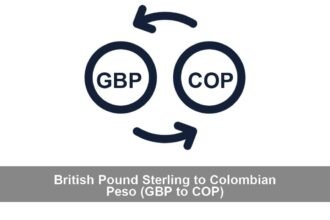- The Pound Sterling booked its third consecutive weekly gain against the US Dollar.
- GBP/USD will likely follow the latter’s price action and tariff talks in the US Nonfarm Payrolls week.
- The path of least resistance appears to be upward for the pair, per the daily technical setup.
The Pound Sterling (GBP) extended its winning momentum against the US Dollar (USD), driving the GBP/USD pair briefly to levels above 1.3400.
Pound Sterling hit the highest level in seven months
GBP/USD mainly remained at the mercy of the US Dollar dynamics, induced by US President Donald Trump’s erratic tariff moves and some flickers of optimism on surprisingly resilient US corporate earnings.
The Greenback yo-yoed wildly this week, tumbling nearly 1% against its major rivals at the start of the week on Monday after Trump threatened to fire Fed Chair Jerome Powell for not lowering interest rates quickly enough, only to surge 1.5% a day later as Trump softened his rhetoric about China and the independence of the US Federal Reserve.
On Wednesday, US Treasury Secretary Scott Bessent said that high tariffs between the US and China are not sustainable, signalling openness to de-escalating a trade war between the world’s two largest economies. The Trump administration also noted that lower-level trade talks were already underway.
In response to the reports about talks between China and the US, a Chinese Foreign Ministry spokesperson said on Thursday they have not held consultations or negotiations on tariffs. A China’s Commerce Ministry spokesman said that the US should lift all unilateral tariffs against China if it “truly” wanted a resolution.
A lack of actual progress towards opening talks with Beijing, though, had the US Dollar drooping again later in the week. However, the US currency regained upside traction on Friday as the recession fears receded, and there was trade deal optimism between the US and its Asian allies, China, South Korea, and Japan.
On Thursday, Seoul’s delegation said both sides aim to craft a trade package before the pause on reciprocal tariffs is lifted in July. Meanwhile, Japanese Finance Minister Kato Katsunobu held talks with US Treasury Secretary Scott Bessent in Washington on Thursday, noting that Bessent did not raise the Yen’s level in bilateral talks.
The US Dollar built on its rebound after a Bloomberg report cited sources stating that the “Chinese government is considering suspending its 125% tariff on some US imports, as the economic costs of the tit-for-tat trade war weigh heavily on certain industries.”
Data published by the Office for National Statistics (ONS) showed Friday that British Retail Sales rose unexpectedly in March by 0.4% month-over-month (MoM), outstripping the anticipated 0.4% decline. The data failed to provide any impetus to the Pound Sterling as economic releases continued to be ignored by markets.
Meanwhile, several Bank of England (BoE) and Fed officials spoke during the week, citing prudence on revising the policy, as they continue to assess the impact of Trump’s tariffs on the economy and inflation prospects. Speaking in a CNBC interview on Thursday, BoE Governor Andrew Bailey said that they see the effect of tariff uncertainty coming through to business investment and consumers.
Trade talks will continue to lead way
Once again, tariff talks concerning the United States (US) and its major global trading partners, including China, will continue to overshadow a bunch of top-tier US employment data in the week ahead.
The US JOLTS Job Openings data will be published on Tuesday ahead of Wednesday’s ADP Employment Change data and the all-important Nonfarm Payrolls (NFP) report on Friday.
However, the advance first-quarter Gross Domestic Product (GDP) data from the US could steal the spotlight as investors remain wary about the impact of US President Donald Trump’s protectionist policies on the economy.
The data could trigger a big market reaction, with intense volatility likely to be seen around the US Dollar trades. Therefore, GBP/USD traders should be cautious when heading into the US GDP showdown midweek.
Other data releases, including the US ISM Manufacturing and Services PMIs, will continue to play second fiddle to trade headlines.
Meanwhile, the UK economic calendar lacks any high-impact data publication while the Fed enters its ‘blackout period’ on Saturday ahead of the May 6-7 monetary policy meeting.

GBP/USD: Technical Outlook

Following the confirmation of a Golden Cross on April 17, GBP/USD extended its bullish momentum and hit the highest level in seven months at 1.3424.
The 50-day Simple Moving Average (SMA) crossed above the 200-day SMA on a daily closing basis, indicating a potential upward trend.
However, overbought conditions on the 14-day Relative Strength Index (RSI) fuelled a moderate correction in the pair to near the 1.3240 level before buyers quickly jumped in.
At press time, the RSI, a leading indicator, holds within the positive territory, near 62, suggesting that the bullish bias will likely extend in the week ahead.
The pair must close the week above the critical confluence resistance range of 1.3425-1.3445 to stretch higher toward the 1.3500 barrier.
Should buying momentum intensify above that level, a test of the February 2022 high of 1.3644 will be inevitable.
Conversely, if the pair witnesses a corrective downside, the 1.3200 round level will be tested initially, below which the doors will open toward the 21-day SMA at 1.3093.
A sustained break below the 21-day SMA will target the 50-day SMA at 1.2934.
Pound Sterling FAQs
The Pound Sterling (GBP) is the oldest currency in the world (886 AD) and the official currency of the United Kingdom. It is the fourth most traded unit for foreign exchange (FX) in the world, accounting for 12% of all transactions, averaging $630 billion a day, according to 2022 data.
Its key trading pairs are GBP/USD, also known as ‘Cable’, which accounts for 11% of FX, GBP/JPY, or the ‘Dragon’ as it is known by traders (3%), and EUR/GBP (2%). The Pound Sterling is issued by the Bank of England (BoE).
The single most important factor influencing the value of the Pound Sterling is monetary policy decided by the Bank of England. The BoE bases its decisions on whether it has achieved its primary goal of “price stability” – a steady inflation rate of around 2%. Its primary tool for achieving this is the adjustment of interest rates.
When inflation is too high, the BoE will try to rein it in by raising interest rates, making it more expensive for people and businesses to access credit. This is generally positive for GBP, as higher interest rates make the UK a more attractive place for global investors to park their money.
When inflation falls too low it is a sign economic growth is slowing. In this scenario, the BoE will consider lowering interest rates to cheapen credit so businesses will borrow more to invest in growth-generating projects.
Data releases gauge the health of the economy and can impact the value of the Pound Sterling. Indicators such as GDP, Manufacturing and Services PMIs, and employment can all influence the direction of the GBP.
A strong economy is good for Sterling. Not only does it attract more foreign investment but it may encourage the BoE to put up interest rates, which will directly strengthen GBP. Otherwise, if economic data is weak, the Pound Sterling is likely to fall.
Another significant data release for the Pound Sterling is the Trade Balance. This indicator measures the difference between what a country earns from its exports and what it spends on imports over a given period.
If a country produces highly sought-after exports, its currency will benefit purely from the extra demand created from foreign buyers seeking to purchase these goods. Therefore, a positive net Trade Balance strengthens a currency and vice versa for a negative balance.





















